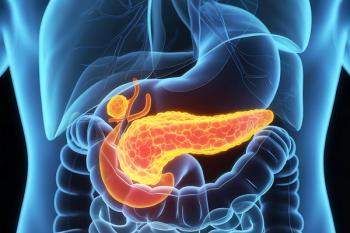
Best of the Week: 2025 Harvey W. Wiley Award Winner, Predicting Retention Indices, Studying Microplastic Pollution
Here is some of the most popular content posted on LCGC International this week.
This week, LCGC International published a variety of articles on trending topics in separation science. Below, we’ve highlighted some of the most popular articles that were published this week in no particular order.
We’d love to hear from you! Is there a topic you’d like to see covered in LCGC? Share your ideas with us—we value your feedback and are committed to exploring the subjects that matter most to our readers. Email
Aaron Acevedo
The Harvey W. Wiley Award is presented every year to a scientist, or group of scientists, who have made outstanding contributions to analytical method development in areas of interest to AOAC INTERNATIONAL. On February 7, Daniéle Sohier, the president of AOAC INTERNATIONAL, announced Eric Verdon as the 2025 recipient of the Harvey W. Wiley Award, the Association’s highest honor for lifetime scientific achievement. Eric Verdon is the head of the European Union Reference Laboratory (EU-RL) for Antibiotic Veterinary and Dye Residues in Food from Animal Origin. His engagement in analytical chemistry has influenced the field of Veterinary Drug Residue Control in Foods, which coincides with his leadership within the French national reference laboratory at ANSES, the French Agency for Food, Environmental, and Occupational Health Safety.
Kate Jones
Organic micropollutants are a group of chemical substances that can be persistent, bioaccumulative, or toxic, making them critical targets for water quality monitoring. Ardiana Kajtazi, a postdoctoral researcher at the Toxicological Center, University of Antwerp, in Antwerp, Belgium, spoke with LCGC International about her research identifying organic micropollutants in water using liquid chromatography–high-resolution mass spectrometry (LC–HRMS). She discusses the standardized filtration approach her team has developed based on intersection principles, utilizing retention indices from two reversed-phase liquid chromatography (RPLC) columns.
John Chasse
Plastic waste pollution has become a serious challenge as amounts of the product ending up into oceans has been increasing every year. Biodegradable polymers, which can be degraded by microorganisms into compounds such as carbon dioxide and water, have attracted attention as a possible solution to plastic waste pollution. Researchers from Gunmo University (Gunmo, Japan) developing marine-degradable poly(butylene succinates) (PBSus), a biodegradable plastic that breaks down into carbon dioxide and water, examined the influence of the molecular weight of specific samples on their biodegradability. The team examined the influence of the molecular weight of specific samples on biodegradability. Samples with differently molecular weighted samples were prepared by fractionation with the use of preparative size-exclusion chromatography (SEC), and biochemical oxygen demand (BOD) in seawater was then evaluated.
John Chasse
A joint study between the Institute for Environment and Energy, Technology and Analytics and Heinrich Heine University Düsseldorf explored the combination of size exclusion chromatography (SEC) with diode array detector (DAD) and capillary-enhanced Raman spectroscopy (CERS) to directly analyze hemolyzed serum samples. While previously doing so was a challenge in clinical diagnostics due to interference, the researchers found that their approach efficiently enabled detailed characterization and differentiation of key blood serum proteins, including immunoglobulin G (IgG), serum albumin, and hemoglobin, as well as allowed effective investigation of the oxidation and binding states of the heme group. We spoke to Jana Thissen, first author of the paper resulting from this study, about her team’s work.
Will Wetzel
Microplastics are small pieces of plastic less than 5 mm in size. They can come from a variety of sources, which include anthropogenic practices. The main question scientists are exploring is how to better monitor and detect these plastics in the environment better, to preserve the environment for future generations. Samiksha Singh, who works at the Department of Environmental Sciences at the University of California, Riverside and the Gauteng City Region Observatory, in Johannesburg, South Africa, pursued this topic because microplastic distribution in coastal marine environments remains poorly understood. Recently, Singh sat down with LCGC International to discuss her team’s findings and methodology, which involved using pyrolysis gas chromatography–mass spectrometry (Py-GC–MS) to analyze tire and road particles and micro-Fourier transform infrared spectroscopy (μFT-IR) to process the particle spectra.
Newsletter
Join the global community of analytical scientists who trust LCGC for insights on the latest techniques, trends, and expert solutions in chromatography.





